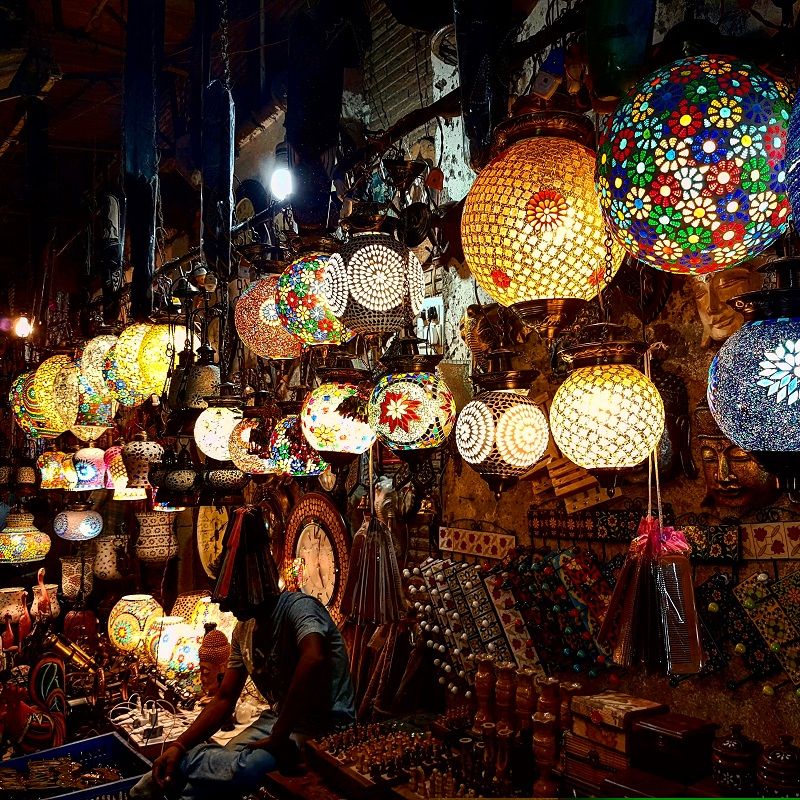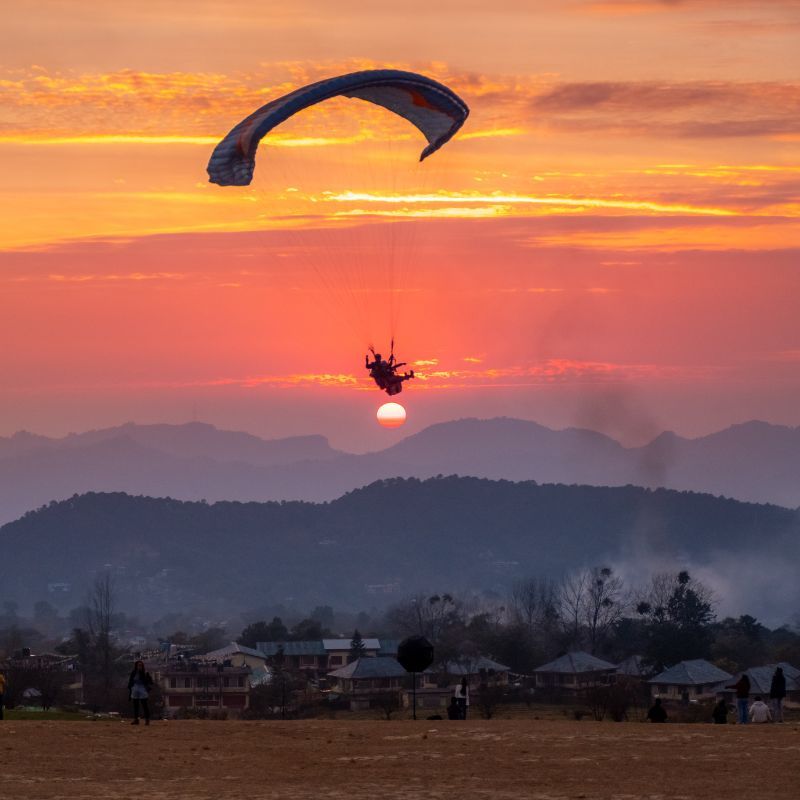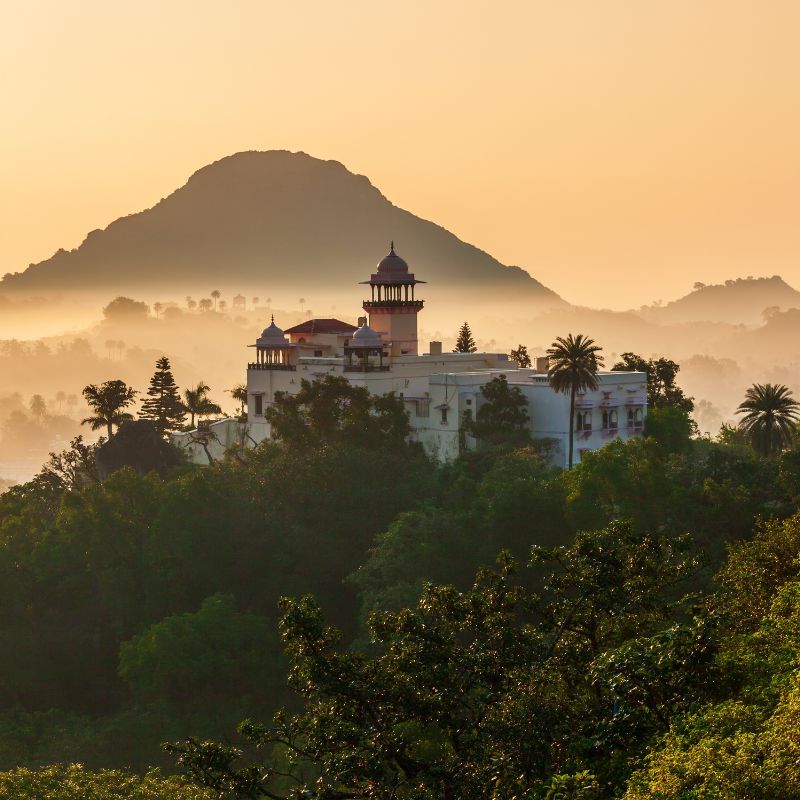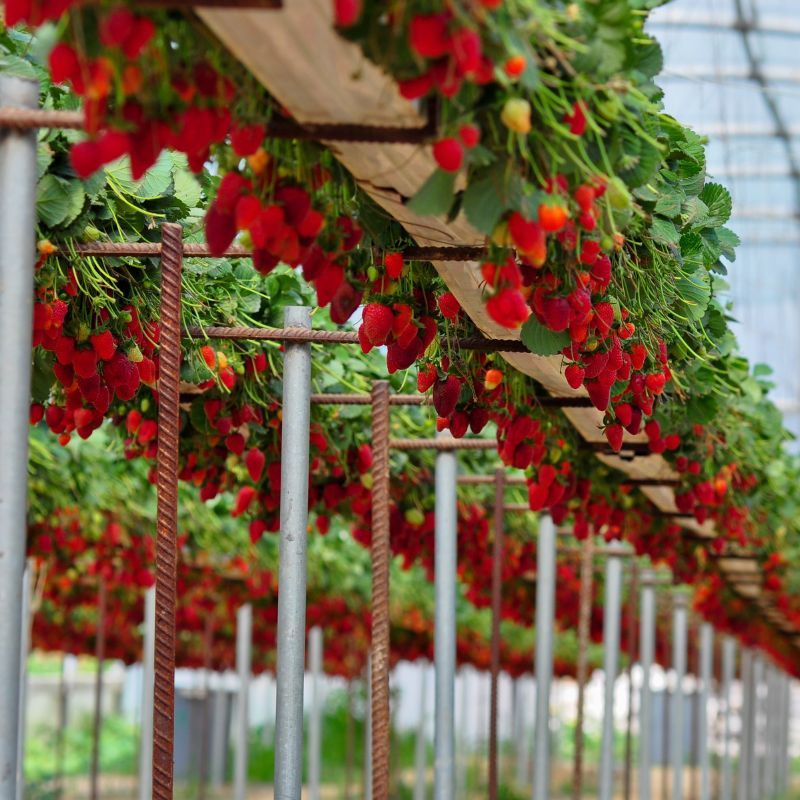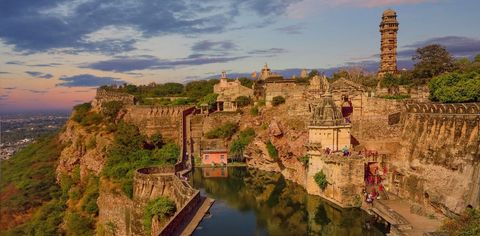
While our rendezvous with Chittorgarh–India’s largest fort–was short and sweet, its saga of divine love, lust, treachery, sacrifice, victory and defeat, continue to haunt us. By Sandy & Vyjay
Rajasthan is synonymous with tales of romance and valour that echo through history. The historic fort in Chittorgarh, in particular, hides within its ramparts many a tale of love and sacrifice that continue to capture the imagination of successive generations. The legends and myths associated with Chittorgarh—be it Mirabai’s divine love, Panna Dai’s unflinching loyalty, or Alauddin Khilji’s maniacal infatuation for the beautiful Padmini—seem to come alive as we explore the fort’s charms. It is as if we are crossing the frontiers of time as we pass seven successive gates, known as pols, to enter the Chittorgarh fort.
Exploring the Chittorgarh Fort through the eyes of a traveller couple
Mirabai’s Immortal Love

It is befitting that we start our Chittorgarh exploration with a visit to the Mirabai temple. It stands out as a mute witness to her saga of divine love; a love that transcended physical barriers to assume sublime proportions. The small temple is shadowed by a bigger temple—the 8th-century Kumbhshyam Temple—that was originally built for Vishnu’s Varaha avatar.
The small temple, however, resonates with Mirabai’s enchanting songs. Believed to have been built by her father-in-law, Rana Sanga, this small temple has been home to many immortalised incidents (some of which have even appeared on celluloid). For instance, it is believed that the famous poison incident where Mirabai drank the potion sent by Rana Vikram Singh took place at this small, yet elegant temple.
Emblem of Victory

The Vijaya Stambha is a tall tower that rises gloriously to the skies and dominates Chittorgarh’s skyline. Built in 1440 by Maharana Kumbha to celebrate his successful military campaigns against the rulers of Gujarat and Malwa, this towering nine-storeyed structure woos you with its sheer architectural elegance and beauty.
The Saga of Sacrifice
The beauty of Padmini, also known as Padmavati, seems to hang over Chittorgarh like a spectre. Be it her fanatic love for her husband Ratan Singh, or Alauddin Khilji’s covetous obsession, Padmini and her beauty seem to define the ethos of the city. Though historically there isn’t any evidence of Khilji’s fatal attraction, the 16th-century poem titled Padmavat by Malik Muhammad Jayasi has captured the public’s imagination.
The Jauhar Sthal from the poem today remains a large open green space near the Vijaya Stambha. It is believed that the last of the three jauhars (self-immolations) of Chittorgarh took place here in 1567 when Akbar laid siege to the fort. The underground chamber where Padmini is believed to have committed jauhar in 1303, is now sealed by authorities.
Rare Shiva Temple

Facing the Jauhar Sthal is a beautiful architectural medley, the Samadhisvar Temple, whose origins date back to the 11th Century. A beautiful facade with ornate pillars and exquisite carvings—reminiscent of Jain temple architecture—welcomed us to the temple. It even has a unique three-headed idol of Shiva. With a unique amalgamation of architectural styles, the Samadhishwara temple is one of the lesser-known gems that we discovered in Chittorgarh.
An Ancient Reservoir

The Samadhishvara Temple stands at the edge of Gaumukh Kund, Chittorgarh’s most popular tourist spot. The Gaumukh Kund is a reservoir with a perennial source of water and is considered very sacred. The emerald green waters bound by the fort’s walls on one side present a beautiful sight.
The Tower of Fame

Chittorgarh Fort has in its fold numerous Hindu and Jain temples. One such exquisite example is the Kirti Stambha and the adjacent Jain temple, both dating back to the 14th Century. The Kirti Stambha, which looks like a clone of the Vijaya Stambha from a distance, is an elegant six-storeyed tower dedicated to Rishabhanatha, the first Jain Tirthankara. Beautifully carved statues of Rishabhanatha can be seen in the niches of the lofty tower.
A Deserted Palace

Built by Ratan Singh II in the earlier part of the 14th Century, Rana Ratan Palace is a deserted palace in ruins standing on the edge of a reservoir. As we move through the almost empty and semi-dark palace, we wonder how life must have been here during its heyday. We think of the many scenes of romance and political treachery that must have been enacted here. While the palace probably echoed with the sounds of children shouting and playing, we can now only hear the echoes of our own footsteps in the vast expanses.
How to reach
Chittorgarh can be visited as a day trip from Udaipur, which is at a distance of about 111 kilometres. The nearest airport, Udaipur’s Maharana Pratap Airport is 92 kilometres away.
Where to stay
If you want to halt in Chittorgarh and explore its treasures at leisure, you can stay at the Kukda Resort, a comfortable hotel in Chittorgarh.
Where to eat
When in Chittorgarh, relish local Rajasthani cuisine at any of the no-frills restaurants. We recommend the Jai Chittore Restaurant.
Note: Sandy & Vyjay are travel writers and bloggers.
Related: Bundi In Rajasthan Has Stories From Past Scribbled On Stones


